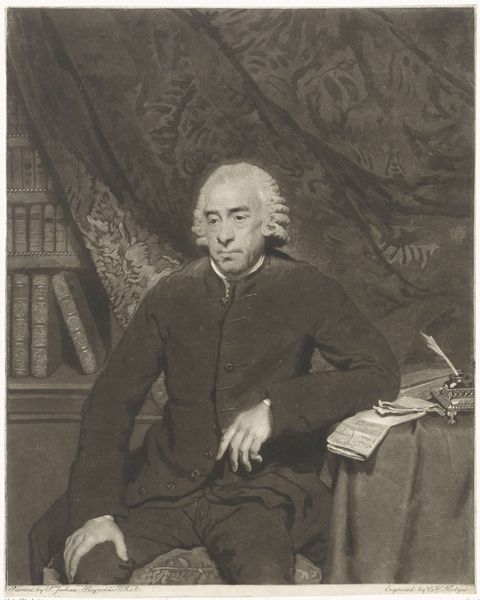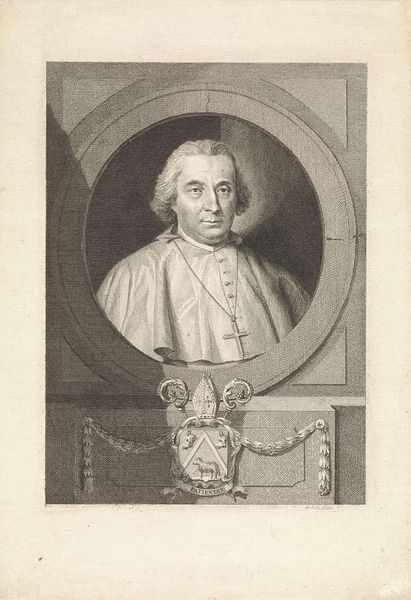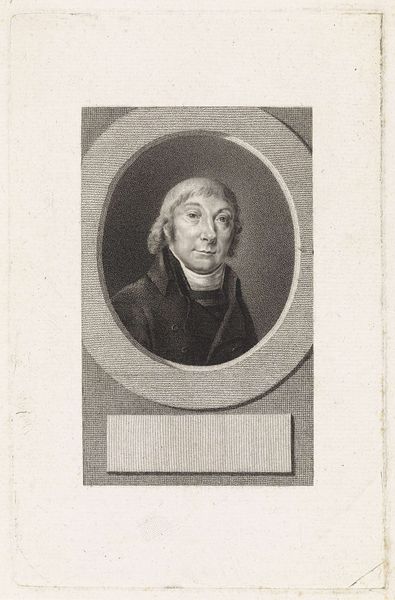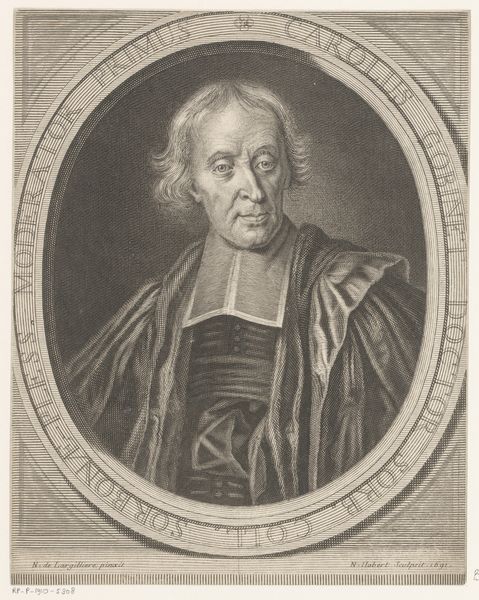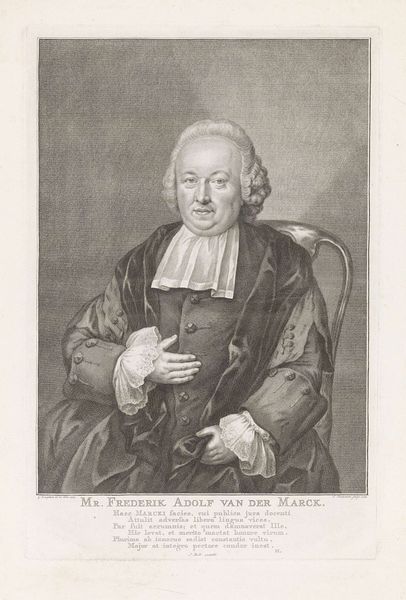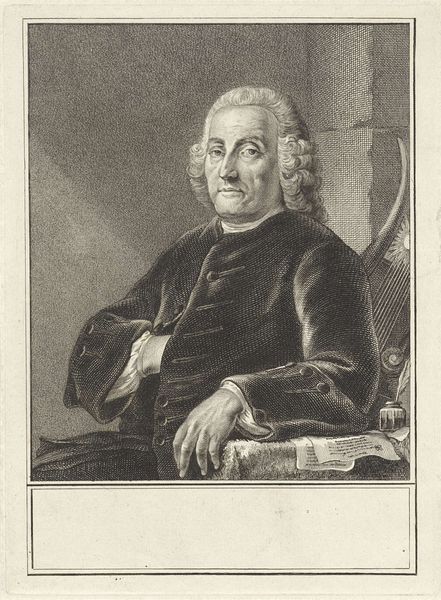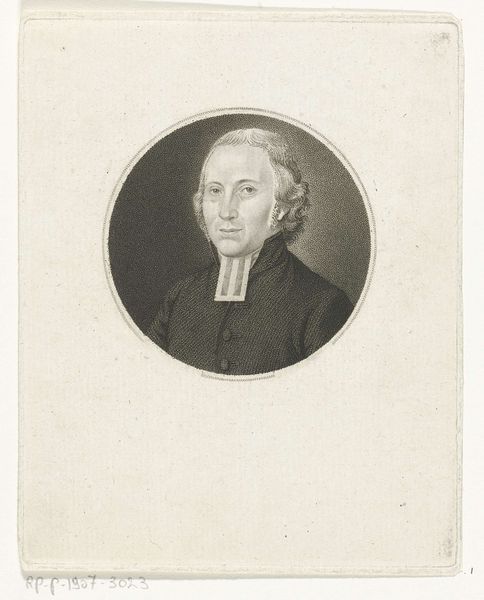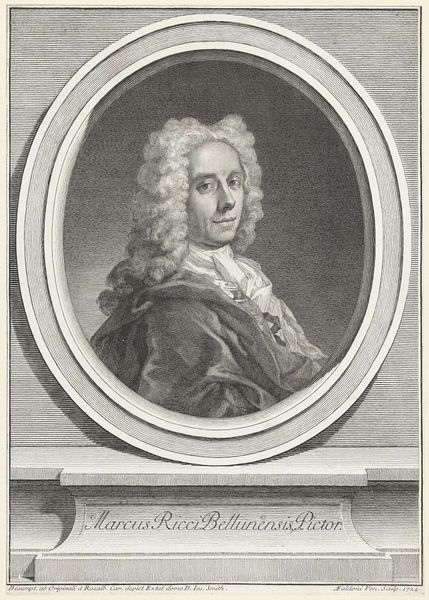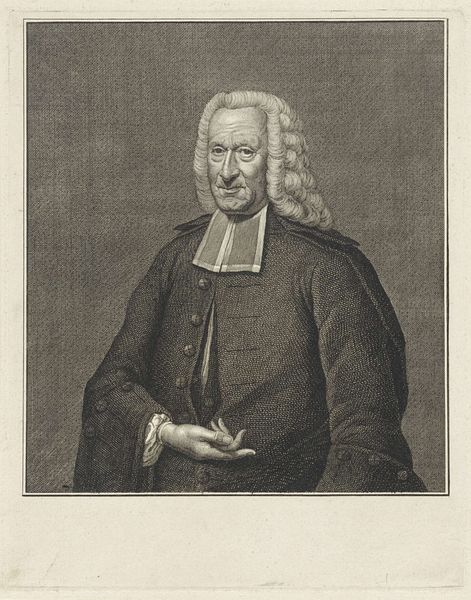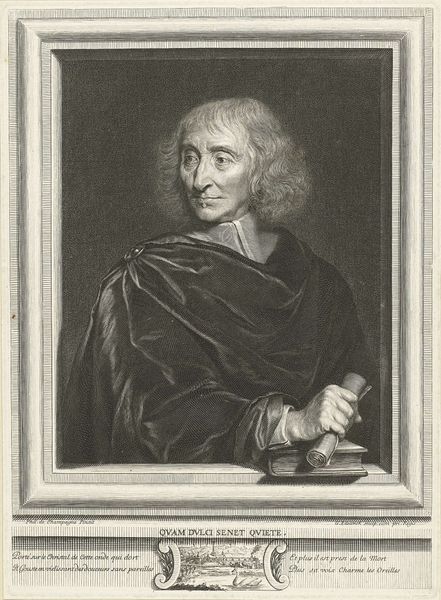
Dimensions: height 330 mm, width 235 mm
Copyright: Rijks Museum: Open Domain
Curator: This is a portrait of Joseph Dobrowsky, the renowned philologist. Crafted before 1863, this piece, currently residing in the Rijksmuseum, is an engraving by Tommaso Benedetti. Editor: It has a certain severity to it, doesn't it? Very formal. Almost like an official document. Curator: Well, portraits like this one were often about projecting authority and intellect. Dobrowsky was a significant figure in his time, a scholar of Slavic languages and Bohemian history. We must situate the portrayal of masculinity in the romantic period—an epoch in which historical intellectual contributions, in contrast to that of revolutionaries or colonial leaders, shaped concepts of the national "spirit." Editor: Interesting. My eye goes straight to the details rendered through the engraving process: the texture of his coat, for instance. Or consider the sheer labor required to achieve this level of detail, the marks almost resembling textile threads when magnified—laboring hands enacting material skill to represent intellect. Curator: Absolutely. Engraving allowed for the mass production of images, making Dobrowsky's likeness more accessible to a wider audience. And the romantic idealization of "the people" required such heroic figuration in visual mediums. Editor: Indeed, although I cannot help but question to what extent Dobrowsky had power in that distribution of images. How aware was Dobrowsky himself, this intellectual, of the social ramifications of the reproduction of his image as a representation of historical truth? Curator: That's an important question! The layers of interpretation are fascinating when thinking about portraits of significant public figures and who truly owns their narrative. The role of an academic such as Dobrowsky in an age when so many cultures were under colonial dominion makes you think of Orientalism and the European tendency for scholars to study "the Other" in an effort to better colonial ambitions. Editor: Thinking about the production, materiality, the dissemination of knowledge, all that is quite relevant now. Curator: It does encourage us to think about representation, intellectual labor, and accessibility within the landscape of national and cultural identity—important for any generation. Editor: Seeing it through that lens certainly highlights aspects I hadn’t considered initially. I leave having a newfound respect for the nuances of engraving and of representation.
Comments
No comments
Be the first to comment and join the conversation on the ultimate creative platform.
